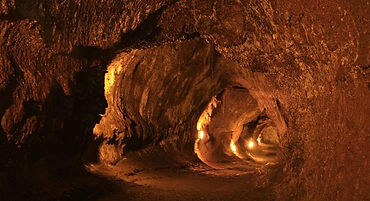By: Samuel Lin
Dust storms with ferocious winds blew the red dust on, rocky terrain of Mars. In the freezing temperatures amid treacherous conditions, a vehicle which contained astronauts alighted into a large cave, where there were houses, greenhouses, and other buildings. The cave was their shelter
Researchers have found future astronaut shelters on Mars. On the dangerous planet, there are thousands of natural caves; some larger and more suitable caves could be shelter for astronauts.
Led by researcher and geoscientist Nicole Bardabelias from the University of Arizona, a group of scientists studied how caves could be shelters that protect astronauts from hazards on Mars. They reported their findings to the Geological Society of America Connects meeting in Denver, Colorado, on October 11th.
There are many hazards on mars, including meteors. Meteors are more likely to hit Mars because Mars has a thin atmosphere that does not destroy the incoming meteors. There are also drastic temperature changes, which can range from 80.6 F to -207.4 F. To make life even more perilous on Mars, there are harmful radiation levels on Mars.
In their report, they discussed how around 1000 caves or subsurface voids were documented in the Mars Global Cave Candidate Catalog made by Glen Cushing. These caves were mainly discovered by the Mars Odyssey’s THEMIS-VIS camera, as well as by the Mars Reconnaissance Orbiter. Furthermore, some of the caves were photographed using HiRISE, a powerful camera that can photograph Mars with great detail.
Scientists used certain criteria to determine which of the 1,000 caves were habitable: the cave must be photographed using HiRISE, the cave must be larger than a football field, and it must be in a 60-mile radius of a potential landing site.
The cave must also be at least 3,300 meters deep because this provides time for the spacecraft to decelerate into the cave.
“If you don’t have enough space between when you hit the top of the atmosphere and where you’re supposed to land, it’s going to be very, very hard for you to do the entry, descent and landing sequence properly,” explained Nicole Bardabelias.
With 139 caves left, the team of scientists manually examined each one to choose the best of the best. Nine caves were found to be suitable.
“There’s numerous hazards on Mars’ surface, including radiation, extreme temperatures and dust storms,” said Cushing, the creator of the Mars Global Cave Candidate Catalog. “Caves really protect from all of these things.”
Further research must be done in order to find out more about these caves. More images from HiRISE must be taken from different perspectives and angles to reveal more about these nine possible candidates.
Sources:
https://www.nytimes.com/2022/10/29/science/mars-caves-astronauts.html
https://nap.nationalacademies.org/read/10360/chapter/5#23
https://gsa.confex.com/gsa/2022AM/meetingapp.cgi/Paper/383602
https://www.independent.co.uk/space/mars-caves-future-astronauts-shelter-b2214936.html
https://www.nytimes.com/2022/10/29/science/mars-caves-astronauts.htmlc
https://www.space.com/7440-mars-caves-protect-microbes-astronauts.html











